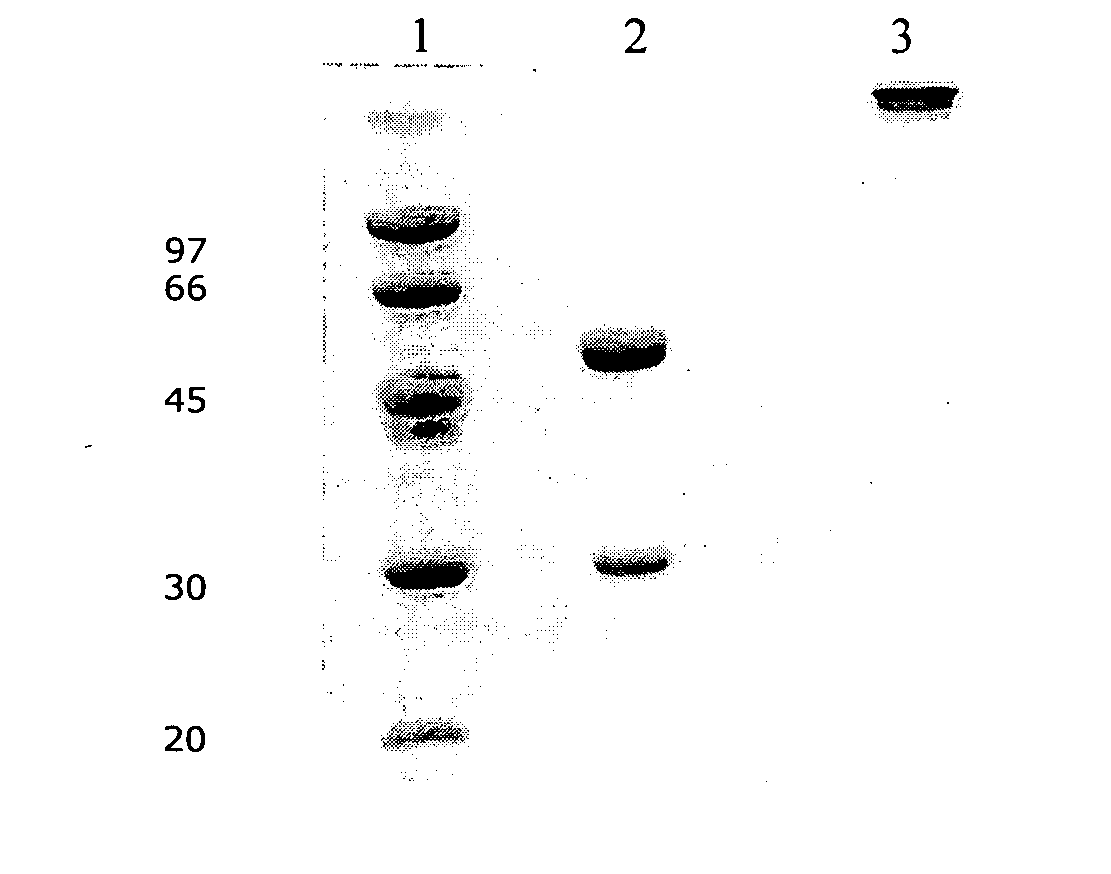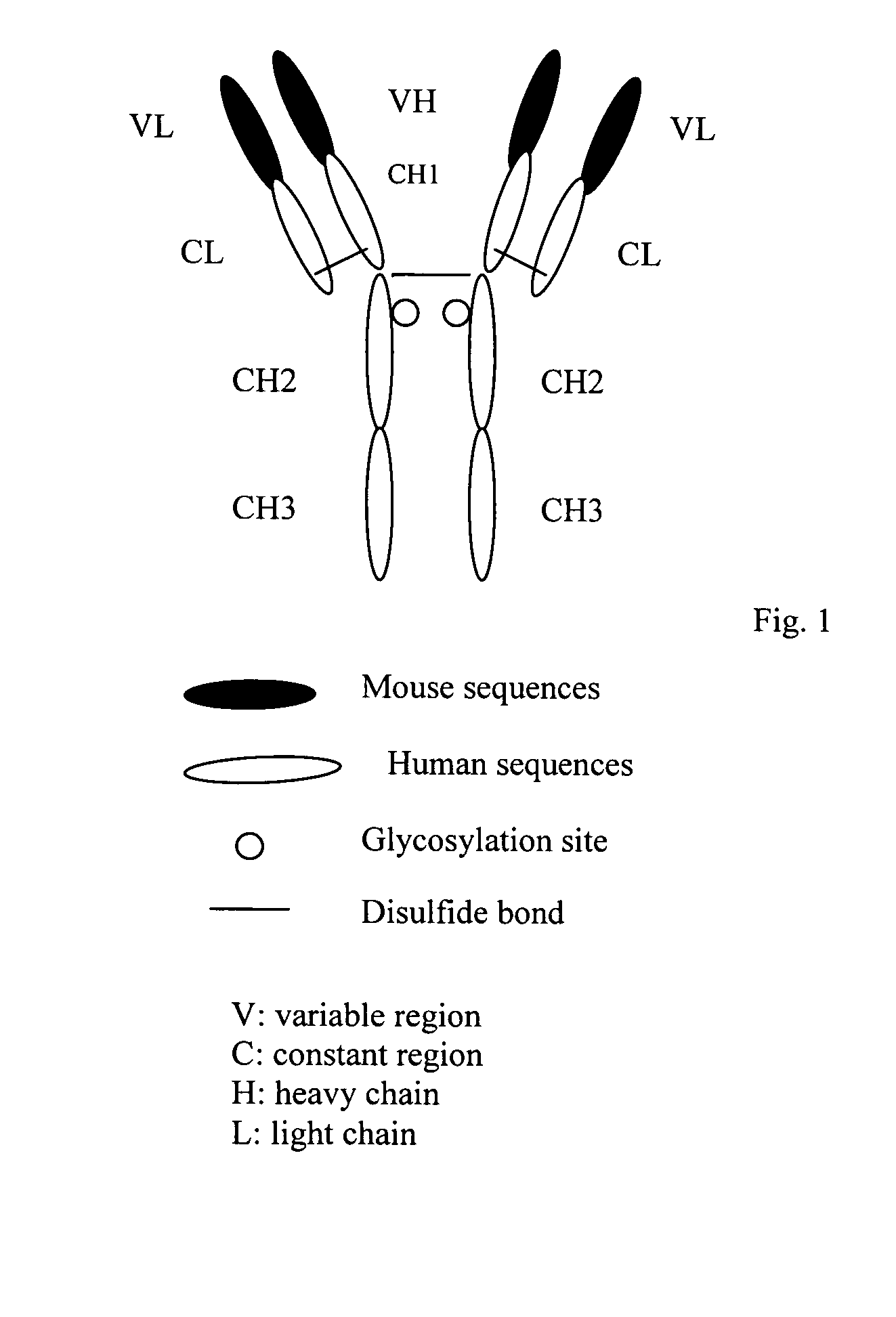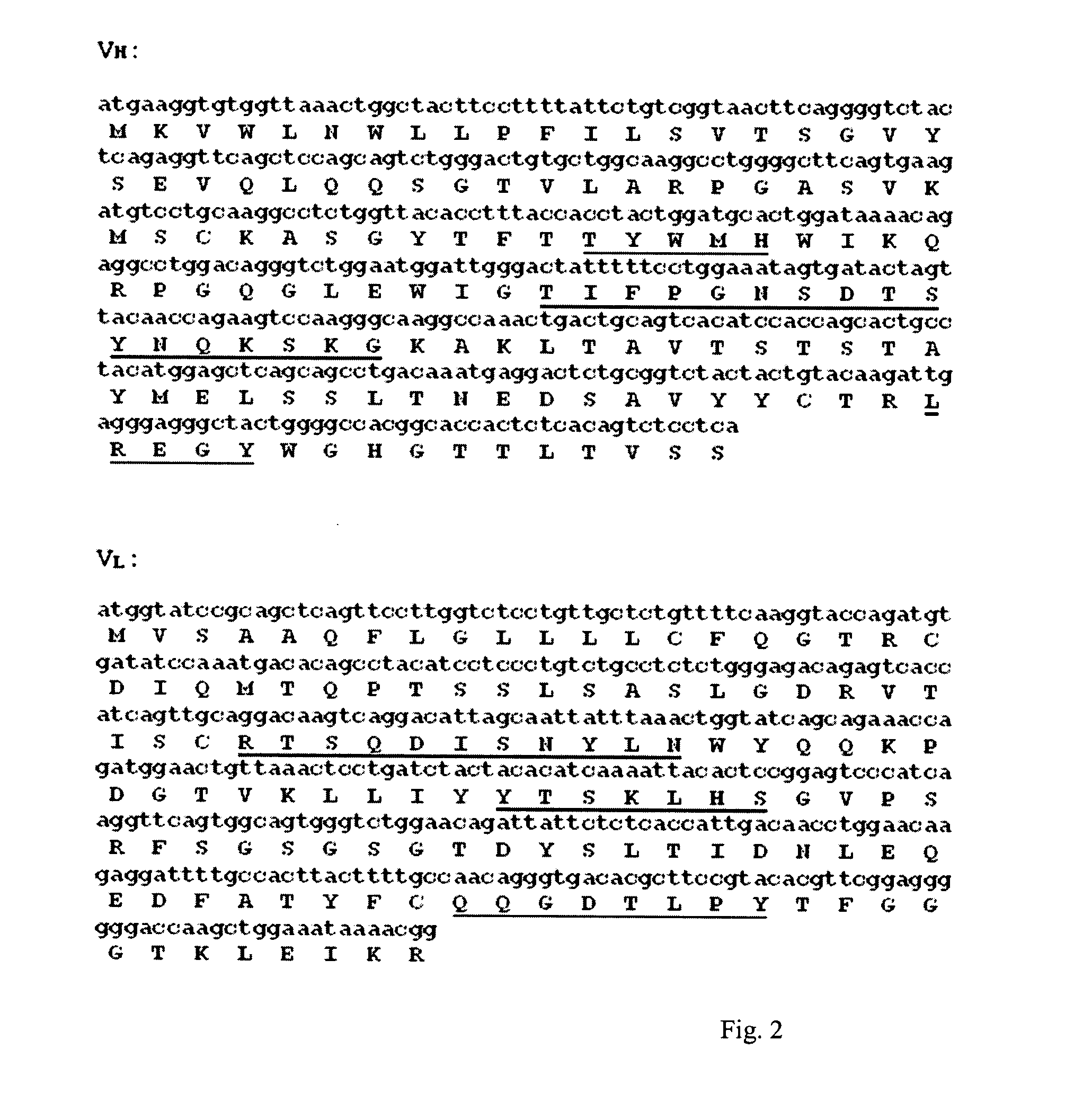Monoclonal antibody with the capability of neutralizing enterovirus type 71 infection
- Summary
- Abstract
- Description
- Claims
- Application Information
AI Technical Summary
Benefits of technology
Problems solved by technology
Method used
Image
Examples
example 1
[0025] Example 1 describes the cloning of the heavy chain variable regions from hybridoma cell line 1G3 by using reverse transcriptase-polymerase chain reaction (RT-PCR) method (see, e.g., Coloma, M. J., Larrick, J. W. and Morrison S. L. (1992) Novel vector for the expression of antibody molecules using variable regions generated by polymerase chain reaction. J. Immunol. Methods 152, 89-104, incorporated herein as reference in its entirety.)
Hybridoma Cell Line:
[0026] Mouse hybridoma cell line 1G3, obtained from Dr. Chun-Keung Yu (Department of Microbiology & Immunology, College of Medicine, National Cheng-Kung University), producing a neutralizing anti-EV71 immunoglobulin G (IgG) was used in this experiment. The hybridoma cells were grown in Dulbecco's Modified Eagle medium (DMEM, GIBCO) with 10% fetal bovine serum (FBS) supplemented with 4 mM glutanmine (Sigma), 2 g / L sodium bicarbonate, and 10 ug / l pincillin 100 ug / l streptomycine (GIBCO).
Cell Line:
[0027] Chinese Hamster Ova...
example 2
[0035] Example 2 describes the cloning of light chain variable region from hybridoma cell line 1G.
[0036] Plasmid 09EV030318-3-pyVk-F:
[0037] The plasmid, 09EV030318-3-pyVk-F, containing the variable region cDNA of light chain was produced from hybridoma cells RNA by Access RT-PCR System (Promega, Cat# A1250) according to the manufacture's instruction. The primers used for RT and PCR were primer mixture containing Mulgk VL5′-F1, Mulgk VL5′-F2, Mulgk VL5′-F3, Mulgk VL5′-F4 and MuCk For primer. The primer sequence is shown in Table 2. The RT reaction was performed at 48° C. for 45 min and the PCR was continuously carried out in the same tube for 40 cycles with 30 sec denaturing (94° C.), 1 min annealing (60° C.), 2 min extension (68° C.), and a final extension of 7 min. The size of the PCR products was verified by 1% TAE agarose gel stained with ethidium bromide. The PCR product (˜380 bp) was purified from the agarose gel and cloned into the TA vector (pyT&A vector, Yeaatern), then tr...
example 3
[0038] Example 3 describes the cloning of the human heavy chain constant region.
[0039] Plasmid 09EV030303-5-pTHclgG1:
[0040] The cDNA of human IgG1 heavy chain was produced from human PBMC total cellular RNA by the Access RT-PCR System kit (Promega) according to manufacture's instruction. The specific primers used for RT and PCR were HUIgGC3-5′:5′-ctggcaccctcctccaagagcacctctgggggc-3′ and HUIgGC2-3′:5′-ggtctagatcatttacccggagacaggg-3′. The RT reaction was performed at 48° C. for 45 min and the PCR was continuously carried out in the same tube for 40 cycles with 30 sec denaturing (94° C.), 1 min annealing (60° C.), 2 min extension (68° C.), and a final extension of 7 min. The PCR product was analyzed by 1% agarose gel electrophoresis. The cDNA (˜1 Kb) was cloned into TA vector and verified by DNA sequencing analysis.
PUM
| Property | Measurement | Unit |
|---|---|---|
| Fraction | aaaaa | aaaaa |
| Angle | aaaaa | aaaaa |
Abstract
Description
Claims
Application Information
 Login to View More
Login to View More - R&D
- Intellectual Property
- Life Sciences
- Materials
- Tech Scout
- Unparalleled Data Quality
- Higher Quality Content
- 60% Fewer Hallucinations
Browse by: Latest US Patents, China's latest patents, Technical Efficacy Thesaurus, Application Domain, Technology Topic, Popular Technical Reports.
© 2025 PatSnap. All rights reserved.Legal|Privacy policy|Modern Slavery Act Transparency Statement|Sitemap|About US| Contact US: help@patsnap.com



